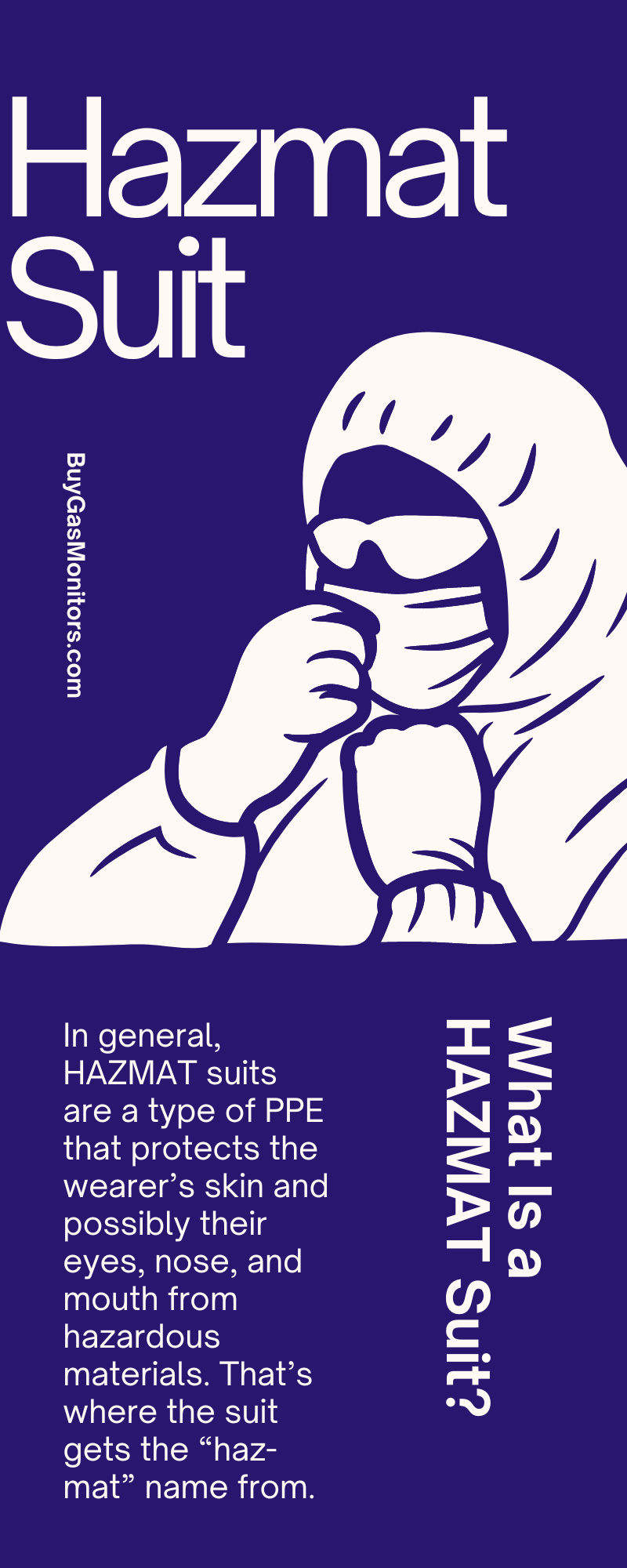Full-Body Protective Suit: The History of Hazmat Suits
Posted by William Kimmell on 18th Aug 2022
When most people think of HAZMAT suits, they probably imagine scenes from Cold War-era films or doctors working in plague-infested hospitals. However, there’s a lot that people don’t know, like the history of HAZMAT suits and how they fit into the narrative of personal protective equipment (PPE). Check out our deep dive into the history of HAZMAT suits and protective clothing.
What Is a HAZMAT Suit? And How Do HAZMAT Suits Work?
Despite what many people think, there is no singular definition of a HAZMAT suit, partly because each suit does different things. In general, HAZMAT suits are a type of PPE that protects the wearer’s skin and possibly their eyes, nose, and mouth from hazardous materials. That’s where the suit gets the “haz-mat” name from.
The United States has four levels of HAZMAT protection, while the European Union has six. The highest tier of radioactive protection gear covers the entire body and protects the wearer from both liquids and gases. These suits come with their own self-contained breathing apparatus (SCBA). The lowest level of HAZMAT protection is little more than a good pair of overalls and steel-toed work boots.
HAZMAT Precursors
People have been wearing different forms of PPE for as long as they have worked around dangerous materials. In some ways, a blacksmith wearing a leather apron is a type of PPE, as are beekeeping suits and diving outfits. HAZMAT suits are just one kind of radioactive protective gear.
The most famous form of early PPE is the plague doctor costume. While plague doctors wore many kinds of full-body protective suit, the popular image consists of a long black coat, a broad-brimmed black hat, and the iconic white mask with a long beak and goggle-style eye holes.
Some people might not know that early doctors believed diseases spread through miasma, or “bad air.” Before people understood the germ theory of disease, they believed you could fall ill from proximity to sick people and dead bodies. The long beak of the plague doctor’s mask held special herbs that they believed would prevent them from breathing in a patient’s miasma.
Besides the fact that people didn’t truly understand how diseases spread, the other problem with plague doctors was they didn’t know how to remove the radioactive protective suit properly or disinfect their clothes to prevent spreading disease. If you wear PPE in a contaminated area and then go back home to change clothes, congratulations! You just brought germs into your house.
Early HAZMAT Suits
The first-time doctors developed a PPE that scholars consider an early HAZMAT suit was during the Manchurian plague epidemic of 1910-1911. Dr. Wu Lien Teh believed the plague was airborne and developed a gauze mask to protect health workers fighting the epidemic.
At first, people didn’t believe him. A famous French doctor even made a point to perform surgery without a mask to prove Dr. Wu wrong… and then died a few days later. People’s attitude toward safety masks changed, and by the time the Spanish flu of 1918 struck, masks were standard for anyone working around contagious diseases. Though some records point to early designs for similar PPE outfits as early as the 1870s in Russia, the Manchurian plague epidemic was the first-time doctors wore protective suits to deal with an intense disease outbreak.
Early PPE suits were made of white cloth and could include a full-body protective suit or a long white coat and gloves. Then, health workers would cover their heads in cloth wrappings, except for their eyes, so they could see. During both World Wars, HAZMAT suits continued to change as chemical and gas warfare became all too common. Around this time, engineers started using things like rubber to create gas-proof suits with respirator systems.
HAZMAT Suits Today
Today, people use HAZMAT full-body protective suits in various situations. People working at nuclear plants wear them to protect themselves from radiation. Forensics teams wear them at crime scenes to avoid contact with blood and other bodily fluids. Even construction workers wear a low level of HAZMAT physical protection. Drug enforcement agents, chemical spill cleaners, and bed bug exterminators are other examples of workers who wear HAZMAT suits.
Turnout gear, which is the official name for firefighting gear, is usually Level D HAZMAT. Unlike other Level D suits, firefighters wear an SCBA when entering a fire, and their coats must be water repellant. This means some kinds of PPE can combine features from different HAZMAT levels depending on the dangers workers may encounter on the job.
On the other hand, space suits are extremely high-tech PPE, but not usually HAZMAT certified. While they generally keep gases out, they are not foolproof against things like acids, since dealing with acids is not really part of the day-to-day astronaut experience. However, space suits are radioactive protective gear that does many other things that even top-level HAZMAT suits don’t, like protecting the wearer from the sun’s radiation and extreme temperatures in space.
Major Developments in HAZMAT History
As you can see after learning the history of rubber HAZMAT suits and protective clothing, the earliest versions were all made from cloth and occasionally leather. Today, high-level HAZMAT suits are made from rubber to protect people from dangerous chemical splashes and make suits vapor-proof.
While humans first invented PPE to deal with diseases, we use HAZMAT suits today for many other problems, including protection from radiation, poisonous fumes, chemical spills, and even infestations.
What Kind of HAZMAT Suit Do You Need?
If your work requires you to wear a chemical safety suit, you’ll need a Level A, B, or C HAZMAT suit. Level B differs from A in that it doesn’t provide quite as stringent protection for your skin and is therefore not vapor-protective. Level C uses the same suit as Level B but does not require a full SCBA.
Before acquiring a rubber HAZMAT suit, make sure you know what hazardous materials you need protection from. Wearing a suit with a lower protective rating can have serious consequences.
If you have any questions about HAZMAT suits and which version is right for you, contact TG Technical Services. We supply workers with high-level HAZMAT-certified suits, chemical boots, gloves, and other equipment necessary for getting the job done safely.


